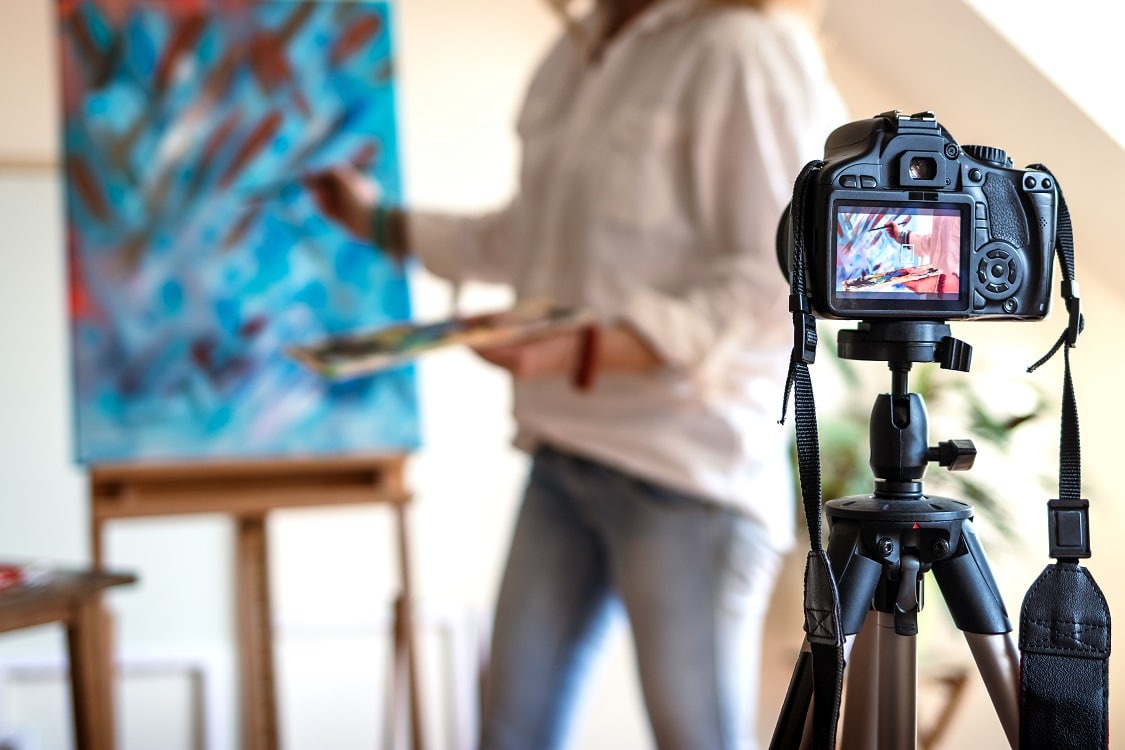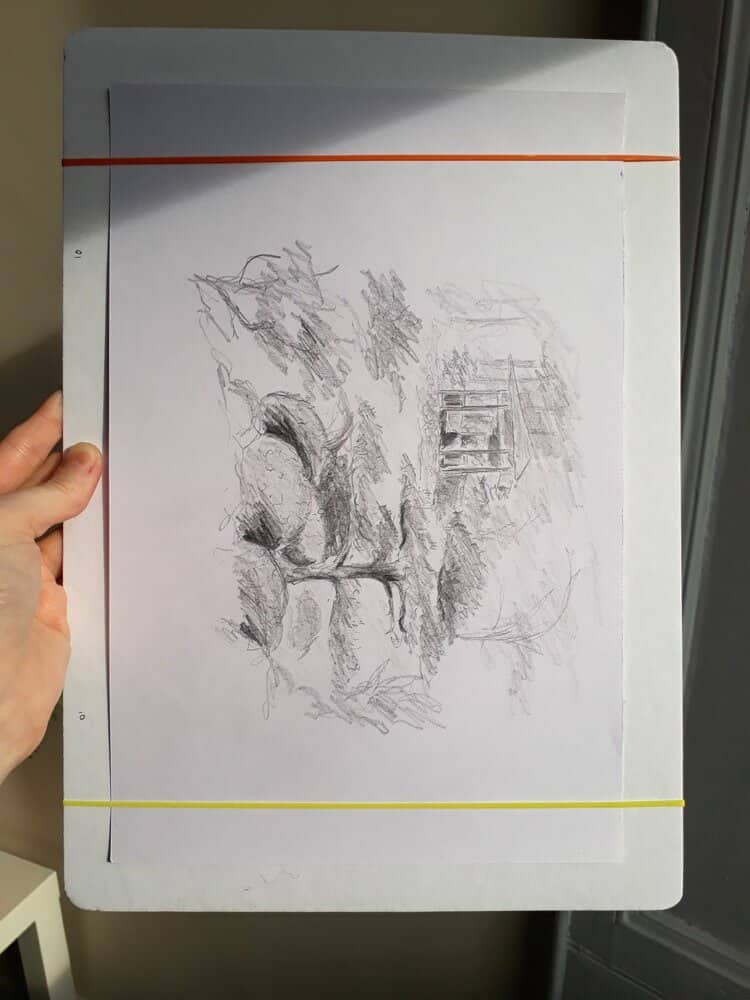With Just Your Phone
In today’s digital world, showcasing your artwork online is as important as creating it. Whether you’re looking to sell, share, or simply document your creative journey, the way you present your art portfolio online can make a significant difference to your art business.
But what if you don’t have access to professional photography equipment? No worries! Your smartphone is a surprisingly powerful tool for capturing high-quality images of your artwork.
With Etchster, you’re showcasing your work for potential buyers and as a professional portfolio. Making sure you have a consistent and high quality portfolio is key to succeeding. Use Etchster’s free website builder for artists to effectively display your portfolio online.
Let’s dive into how you can make the most of it.

The Magic of Lighting
The secret to a great photograph often lies in the lighting, and this is especially true for artwork. Natural light works wonders. Try to photograph your artwork during the day when there’s plenty of it. Overcast days are particularly great as they provide a soft, diffused light that brings out the true colors of your art without harsh shadows.
But what if you’re a night owl or the weather just isn’t cooperating? In that case, soft artificial lighting can be your ally. Steer clear of fluorescent or tinted lights, though, as they can distort the colors in your artwork. Ideally, use two light sources placed at 45-degree angles to your piece. This setup helps reduce glare and shadows, ensuring your artwork is evenly lit.
Setting the Stage
Before you start snapping pictures, take a moment to properly set up your artwork. If it’s a painting or a framed piece, make sure it’s hung at eye level on a wall or placed on a flat, stable surface. And if it’s behind glass, consider removing the glass to avoid any pesky reflections.
Getting the Most Out of Your Phone Camera
Today’s smartphones come equipped with cameras that can rival traditional ones. To get the best results, set your phone camera to the highest resolution.
Resist the temptation to use flash; it can create glare and uneven lighting.
Instead, rely on your external light sources. If your phone has an HDR (High Dynamic Range) mode, turn it on.
It does a great job of balancing the shadows and highlights in your photo.
The Art of Capturing the Image
When it’s time to take the photo, the key is to keep your phone as steady as possible.
If you find it hard to keep your hands steady, a tripod can be a great investment.
Make sure your artwork fills the frame, but avoid using digital zoom, as it can degrade the quality of your photo.
If your artwork has texture or is three-dimensional, don’t hesitate to take photos from different angles to capture all its nuances.

Editing with a Light Touch
Once you’ve got your photos, a bit of editing can help them truly represent your artwork. However, the trick is to keep editing to a minimum. Adjust the brightness, contrast, and saturation to match the original piece as closely as possible. Stay away from heavy filters or effects that alter the colors or feel of your art.
Consistency Counts
If you’re posting your artwork online, especially in a portfolio or store, consistency is key. Use a neutral, uncluttered background for all your photos, and try to stick to a consistent format (either all portrait or all landscape). This uniformity gives your online presence a professional and cohesive look.
Experiment and Seek Feedback
Don’t be afraid to experiment with different settings and setups to see what works best for your art. And once you’ve got a few photos, ask for feedback from peers or potential customers. Their insights can be invaluable in helping you understand how your art is perceived online.
Conclusion
Photographing your artwork with a phone doesn’t have to be a compromise. With the right techniques, you can create stunning images that do justice to your art. Remember, the goal is not just to take a picture, but to convey the essence of your artwork to the viewer. With a bit of practice and these tips in mind, your smartphone photos can truly make your art shine in the digital world.

